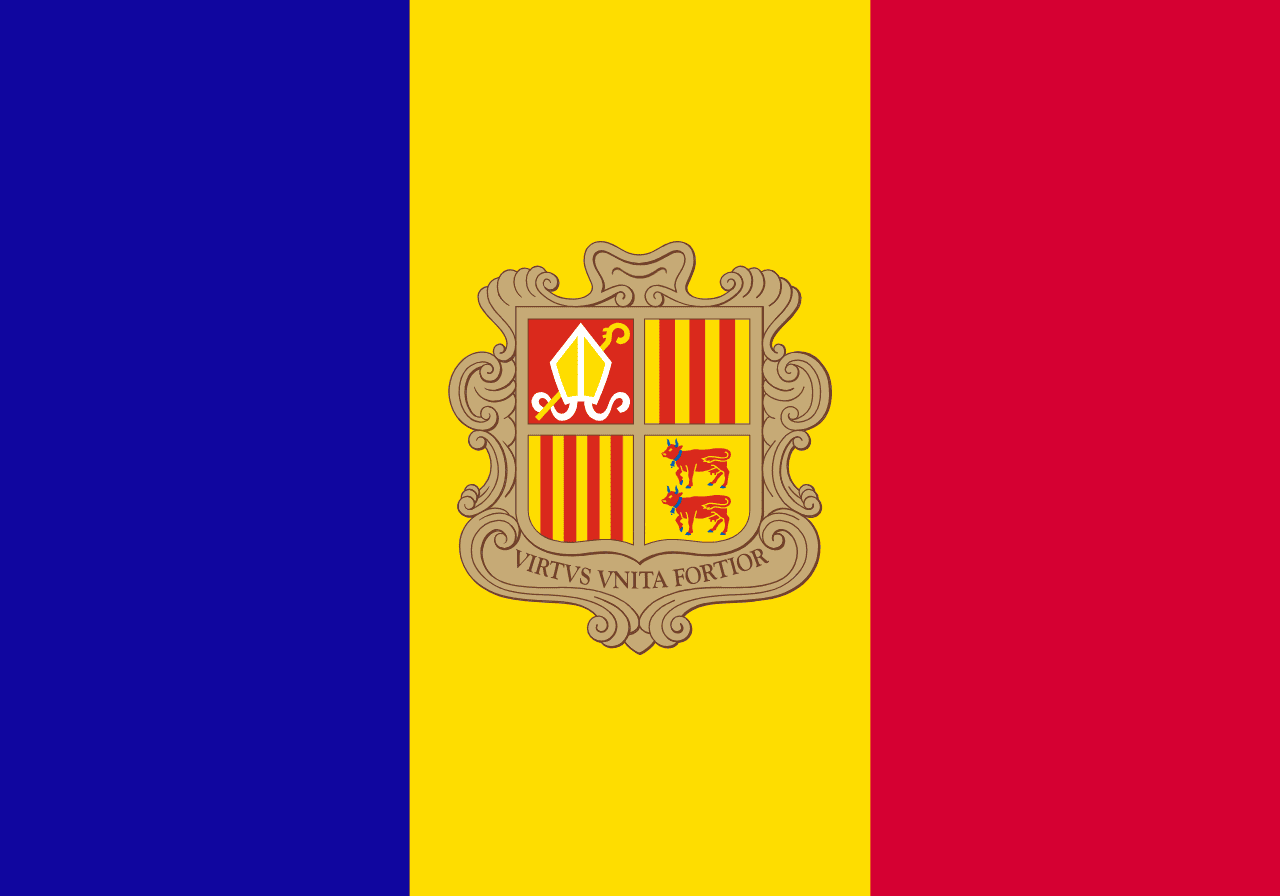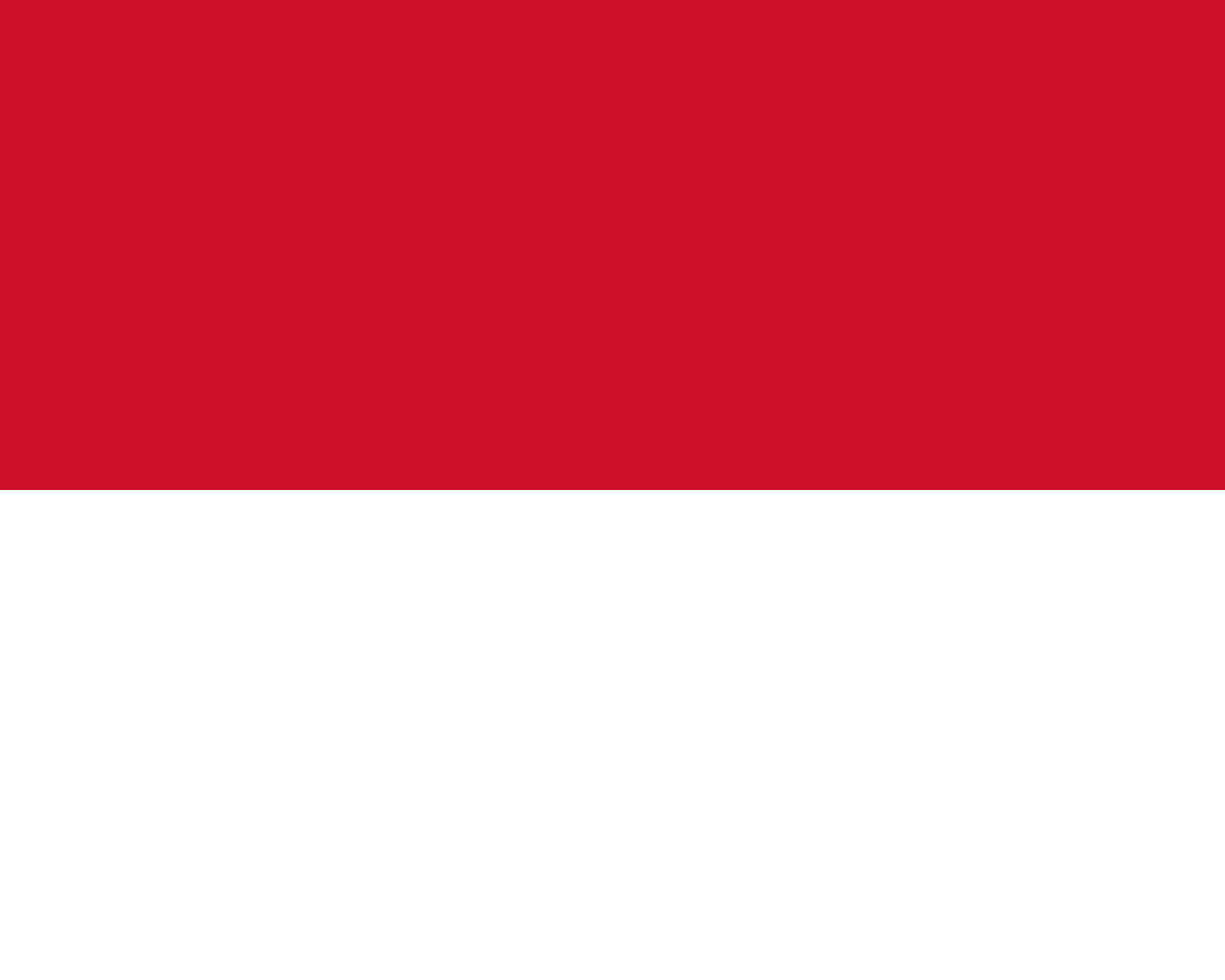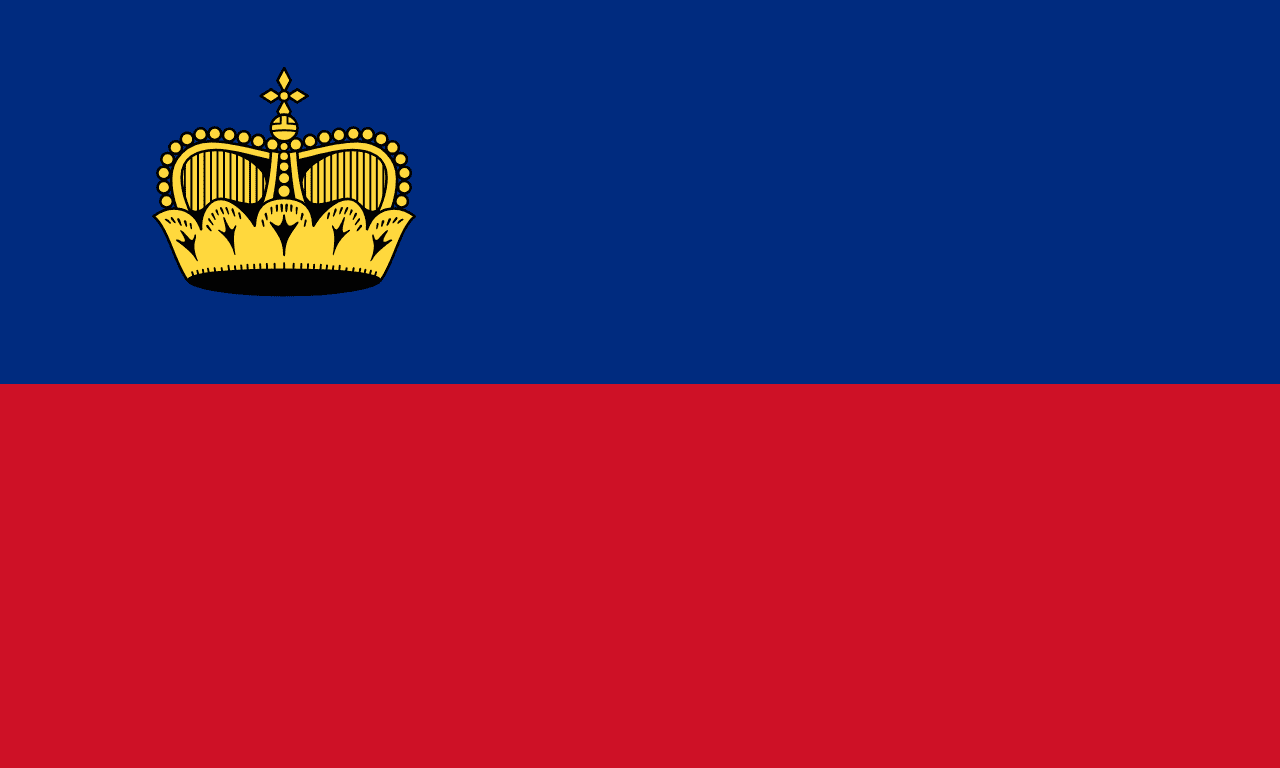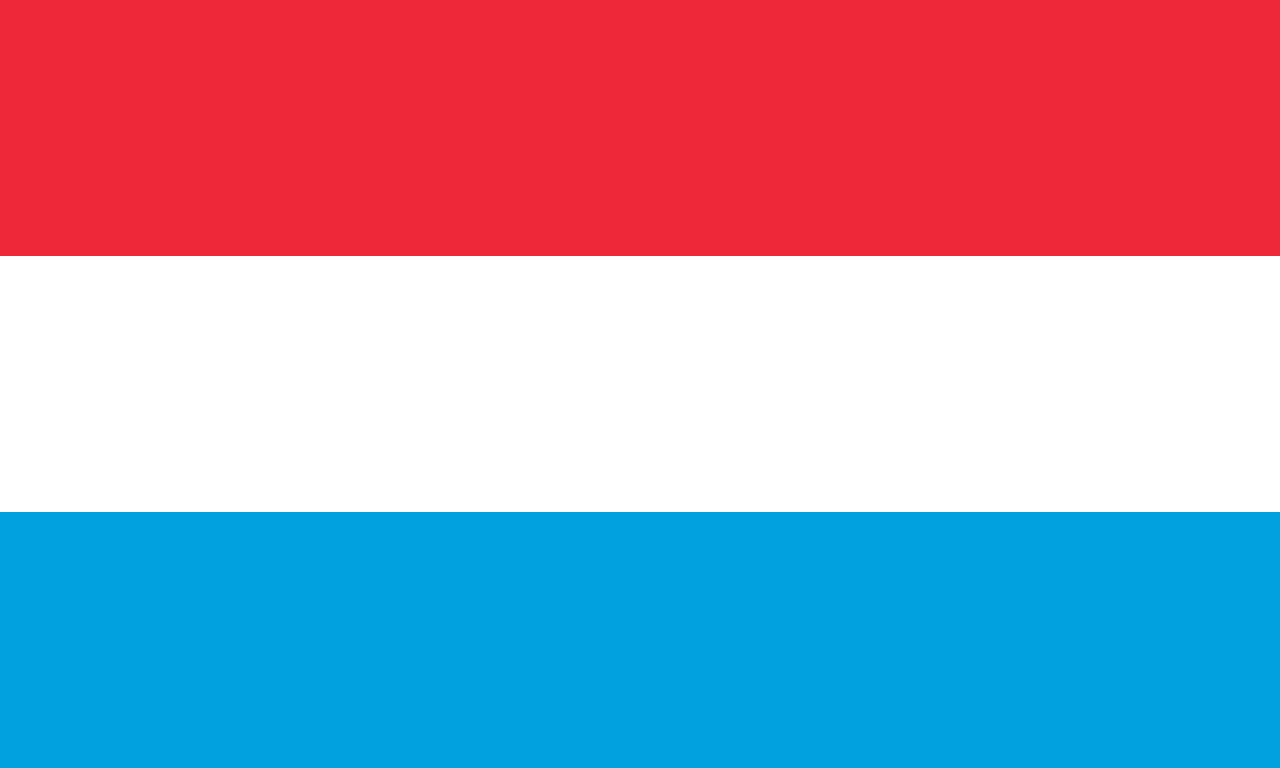Andorra Flag Meaning
Three vertical stripes of blue, yellow, and red with the coat of arms centered on the yellow stripe, representing France and Spain (the co-princes), the principality itself, and the unique dual sovereignty arrangement that has governed this small Pyrenean state for over 700 years.
- Continent
- Europe
- Adopted
- 1866
- Ratio
- 7:10
- Colors
- blue, yellow, red
- Designer
- Unknown

Symbolism
Blue Stripe: Represents France and the French co-prince, symbolizing one half of Andorra's unique dual sovereignty system where the President of France serves as one of two heads of state.
Yellow Stripe: Represents Andorra itself and the principality's sovereignty, symbolizing the small nation's independence and autonomy despite being under the joint protection of France and Spain.
Red Stripe: Represents Spain and the Spanish co-prince (the Bishop of Urgell), symbolizing the other half of the dual sovereignty system that makes Andorra unique among world nations.
Coat of Arms: Features the bishop's mitre and crosier, three red stripes of Catalonia, four red stripes of Foix, and a cow representing the pastoral economy, with the motto 'Virtus Unita Fortior' (Strength United is Stronger).
History
- Medieval Origins: Charlemagne granted a charter to the Andorran people for fighting against the Moors, beginning the special relationship between Andorra and neighboring powers that would evolve into its unique political system.
- 1278: The Pareatges (Paréage) agreement established the co-principality between the Spanish Bishop of Urgell and the French Count of Foix, creating the world's oldest surviving international agreement and Andorra's unique dual sovereignty.
- 1607: The French co-prince title passed to the French crown when Henry IV became King of France, establishing the tradition that continues today with the French head of state serving as co-prince.
- 1793-1814: During the French Revolution and Napoleonic period, Andorra temporarily lost its French co-prince, leading to a period of uncertainty until the monarchy's restoration brought back the traditional arrangement.
- 1866: The current flag was adopted during a period of modernization, formalizing the symbols that represented Andorra's unique relationship with its two larger neighbors.
- 1933: The first Andorran constitution was adopted, formally establishing democratic institutions while maintaining the co-principality system that had governed the country for over 650 years.
- 1934: The 'Andorran Revolution' saw disputes between pro-Spanish and pro-French factions, leading to brief Spanish intervention before the traditional system was restored and democratic processes strengthened.
- 1982-1988: Negotiations between France, Spain, and Andorra led to agreements on defense, customs, and other arrangements that paved the way for full sovereignty while maintaining the co-principality.
- May 14, 1993: Andorra adopted its current constitution and achieved full sovereignty, becoming a member of the United Nations while maintaining its unique dual head-of-state system.
- 1994-2004: Andorra joined various international organizations and signed customs union agreements with the European Union, integrating into European structures while maintaining its special status.
- 2013-2016: Following international pressure over banking secrecy, Andorra signed tax information exchange agreements and implemented financial transparency measures, ending its status as a traditional tax haven.
- 2020-Present: Negotiations continue for an association agreement with the European Union that would provide greater economic integration while preserving Andorra's sovereignty and special institutional arrangements.
Trivia
- Andorra is one of the world's smallest countries by both area (468 square kilometers) and population (about 79,000), making it smaller than most major cities.
- The flag represents the only country in the world with two foreign heads of state - the President of France and the Bishop of Urgell (Spain) serve as co-princes with ceremonial authority.
- Andorra has no airport or railway station within its borders, with visitors arriving through airports in Spain or France and traveling overland through mountain roads.
- The country has one of the world's longest life expectancies and lowest crime rates, creating a reputation as a peaceful mountain sanctuary with high quality of life.
- Catalan is the official language, making Andorra the only country where Catalan is the sole official language, though Spanish, French, and Portuguese are also widely spoken.
- The flag flies over a country with no military forces of its own, relying on France and Spain for defense while maintaining a small police force for internal security.
- Andorra's economy is based on tourism, retail sales (due to low taxes), and banking, with duty-free shopping attracting millions of visitors annually.
- The country experiences a mountain climate with significant snowfall, making it a popular destination for skiing and winter sports in the Pyrenees mountains.
- Traditional Andorran architecture features stone houses with slate roofs adapted to mountain conditions, though modern development has transformed much of the landscape.
- The flag represents a country where about 50% of residents are Spanish nationals, 25% Andorran citizens, and the remainder from various other countries, creating a truly international community.
- Andorra uses the euro as its currency despite not being an EU member, having previously used both French francs and Spanish pesetas simultaneously.
- The country has maintained its independence for over 700 years by skillfully balancing relationships with larger neighbors and adapting to changing geopolitical circumstances.
- Traditional festivals include the Meritxell Day (national holiday) celebrating the patron saint, and various winter carnival celebrations that blend Catalan, French, and Spanish traditions.
- The flag represents a country that has successfully transitioned from a largely agricultural and pastoral economy to a modern service-based economy focused on finance and tourism.
- Despite its small size, Andorra maintains its own postal system, issues its own euros (though limited quantities), and has developed distinctive cultural institutions including the Andorran national library and archives.
Related Countries

France
Europe
Revolutionary tricolor symbolizing liberty, equality, and fraternity.

Monaco
Europe
Two horizontal stripes of red and white derived from the heraldic colors of the House of Grimaldi, representing one of the world's smallest sovereign states and oldest ruling dynasties.

Spain
Europe
Two horizontal red stripes separated by a yellow stripe twice their width, with the national coat of arms on the yellow stripe toward the hoist, representing the historical kingdoms of Castile and Aragon and the traditional colors that have symbolized Spain for centuries.

Switzerland
Europe
A red square field with a white Greek cross in the center, representing the Christian faith that united the early Swiss cantons and the blood shed in defense of freedom, with origins dating back to the Holy Roman Empire and medieval Swiss military banners.

Liechtenstein
Europe
Two horizontal stripes of blue and red with a golden crown in the upper left corner, representing this Alpine principality that is one of the world's smallest and wealthiest nations.

Luxembourg
Europe
Three horizontal stripes of red, white, and light blue representing the Grand Duchy of Luxembourg, one of Europe's smallest but wealthiest nations and a founding member of the European Union.